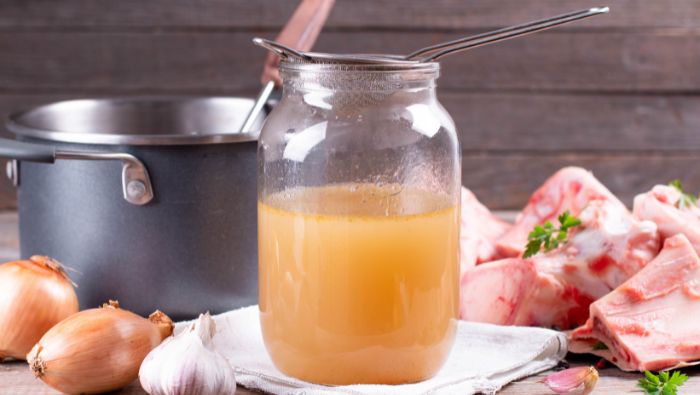The Lost Art of Making Stock From Recycled Bones

Chicken, beef and pork stock is a once-homemade item many people now simply grab from the grocery store shelf. But making your own homemade stock can be far less expensive and far more healthy and tasty.
Good stewardship requires that we make the most of what we have.
Good money management begins with buying only those things you cannot make for yourself.
Excellent cuisine is often determined by seemingly humble ingredients, such as stock or broth.
In the original Joy of Cooking, the Rombauer sisters-in-law give marvelous directions for making vegetable stock, meat stock, brown stock and light stock.
Under the heading “Meat Stock Making,” they write, “While we urge you to utilize the kitchen oddments described under Household Stock, we become daily more aware that the neatly packaged meats and vegetables most of us get at the supermarket give us a decreasing minimum of trimmings. The rabbits, old pheasants and hens that make for such picturesque reading in ancient stock recipes – fairly thrusting the hunter and farmer laden with earthly bounty straight into the kitchen – have given way to a well-picked-over turkey carcass and a specially purchased soup bunch including celery stalks and leaves, carrots, green onions and parsley.”
Sign Up for Savings
Subscribe to get money-saving content by email that can help you stretch your dollars further.
Twice each week, you'll receive articles and tips that can help you free up and keep more of your hard-earned money, even on the tightest of budgets.
We respect your privacy. Unsubscribe at any time.
The results of making stock by the Rombauers’ recipes are absolutely wonderful! But now that women are expected to do more than cook, keep house and raise a family, most of us do not have time to make that kind of stock.
There is, however, a way to come close without standing over your stove all day or buying expensive canned broth.
Chicken bones left over from a meal? Seal them in a plastic bag, refrigerate until cold, and freeze them. Roast bones? Do the same thing.
If you trim the gristle off meat before cooking it, put the trimmings in a bag and add them to your freezer collection.
(The only bones and meat scraps I do not recommend are those that have been grilled. Grilling overpowers all other flavors, and most of us do not want soups, gravies, or stews tasting like the grill.)
When you have enough frozen bones and trimmings to fill a large pan or stock pot, dump all the bones together in the pot, cover with cold water by at least three inches, and bring to a boil. Add onions, carrots, celery, a bay leaf, and pepper if desired. Simmer uncovered about an hour or longer if you like. Make sure there is always enough water to cover the bones.
Strain out and discard the bones and vegetables. Strain the stock into glass jars. Cool stock and refrigerate, uncovered. When stock is cold and accumulated fat has risen to the top of the jar and hardened, remove the fat.
Portion the stock into smaller freezer cartons. Label, date, and freeze. Stock can be thawed and used for any broth or stock called for in any recipe.
Reviewed January 2024
Popular Articles
On After50Finances.com
- 9 Things You Need to Do Before You Retire
- You Didn’t Save Enough for Retirement and You’re 55+
- When Empty Nesters Reorganize and Declutter Their Home
- Reinventing Your Career in Your 50s or 60s
- What Mature Homeowners Should Know about Reverse Mortgages
- 2 Reasons to Collect Social Security Benefits As Soon As Possible


